Lorraine Roy’s search for the perfect way to depict the connections and cycles of trees led to three years of trial and error experiments. In the end, she turned to the most logical solution, the circle.
Through her work, Lorraine explores the variety, beauty and ecology of trees, driven by her fascination with their relationships with other species, and their vital importance in the world’s ecosystem.
Her collection of sensational appliqué and quilted works unite vibrant colour combinations with the circular form.
Having trained originally in horticulture, Lorraine finds that research, along with a natural curiosity and thirst for knowledge, plays a big part in her creative process. Working directly with academic experts to gain a deep understanding of her subject, she became captivated by the communication of trees through underground mycorrhizal (fungal) networks.
Lorraine’s Woven Woods series of circular quilted wall hangings were created for a Canadian touring exhibition, to portray different aspects of the mycorrhizal network. Through this complex interdependent plant-fungal system, trees can share water and nutrients, and send chemical signals to each other, with the mycorrhizal fungi receiving sugars in return.
Each artwork in Woven Woods highlights a different season, stage of growth, or environmental fluctuations, showing a thriving, balanced ecosystem, and the importance of nature’s interconnections.
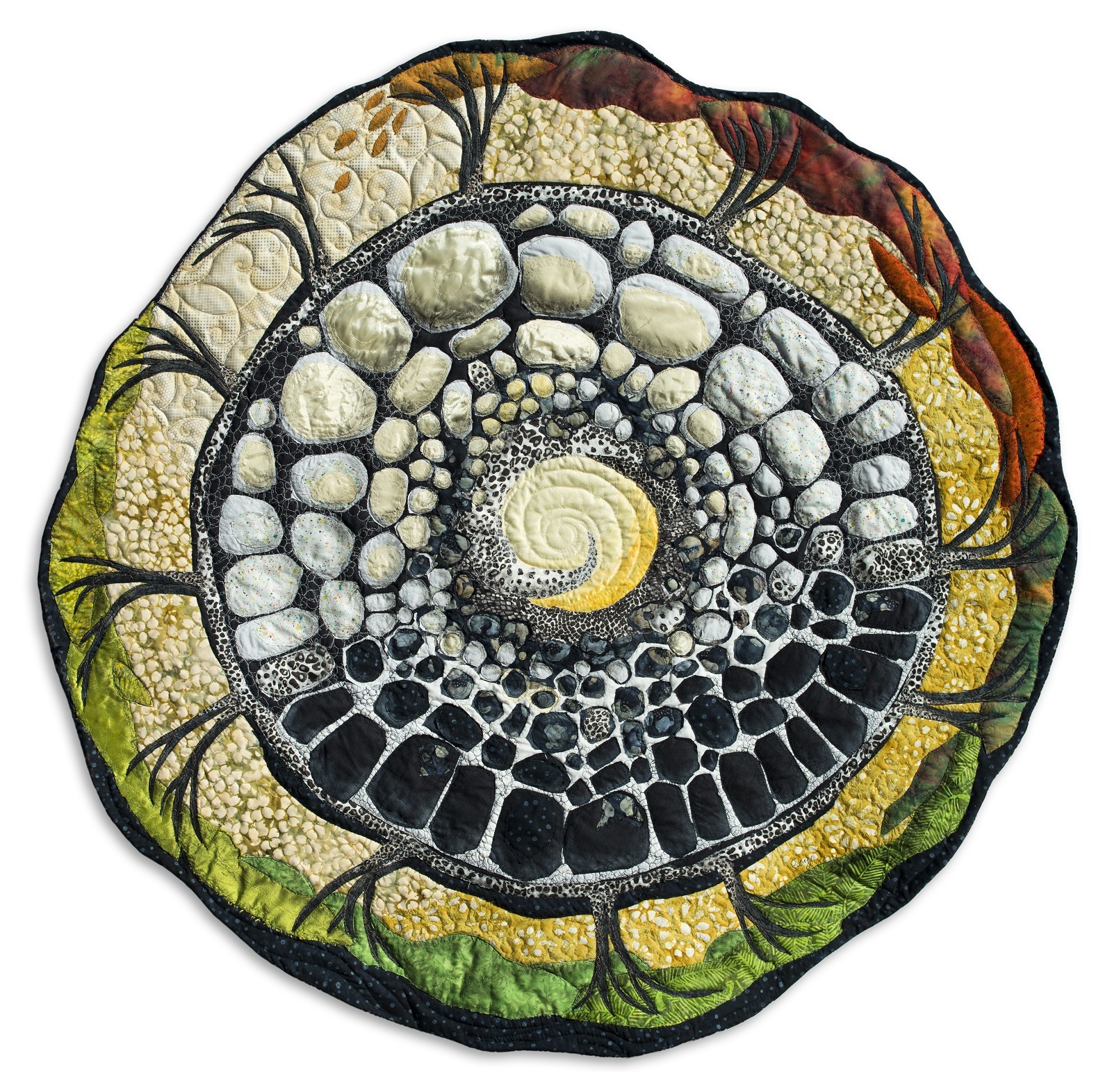
Connecting with trees
TextileArtist.org: Can you tell us more about your fascination with trees?
Lorraine Roy: There’s nothing not to love about trees. Trees are the single most important organism on the planet, helping to stabilise our environment and the air we breathe. They connect earth and sky.
The more I learn about trees, the more I find there is to discover, both in existing knowledge and new research.
I grew up in a flat agricultural area where trees were relegated to confined areas, and I’ve always been attracted to the shade and mystery they harbour.
I love how they have their own orbit of interesting insects and animals that depend upon them, both above and below the ground. Trees are beautiful, varied, and complex, just like people. It’s occurred to me that, in my work, perhaps trees actually stand in for people.
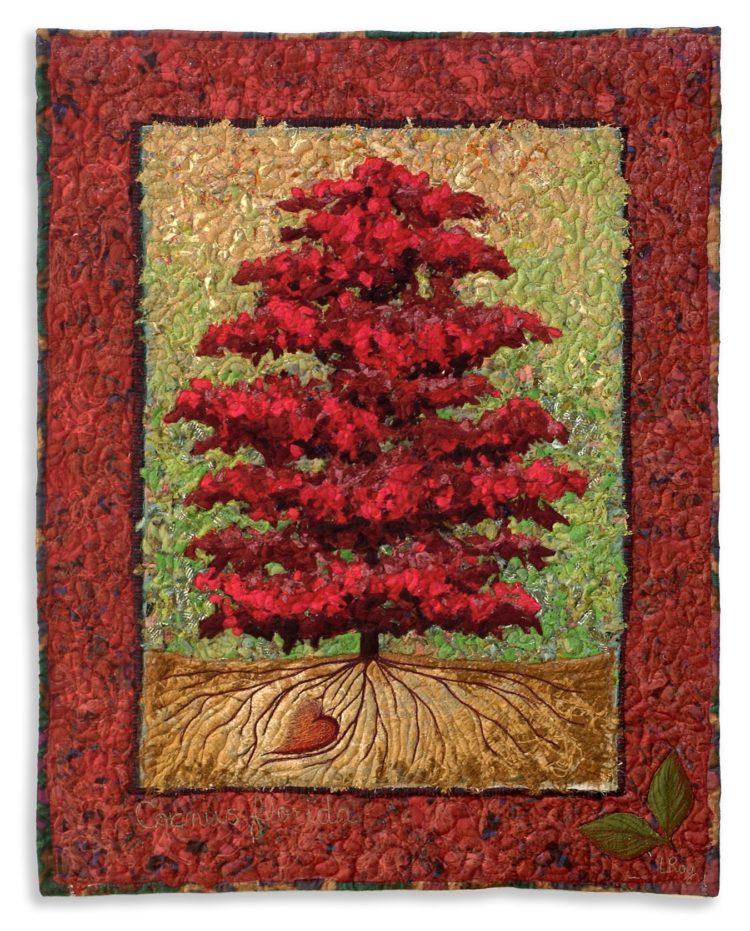
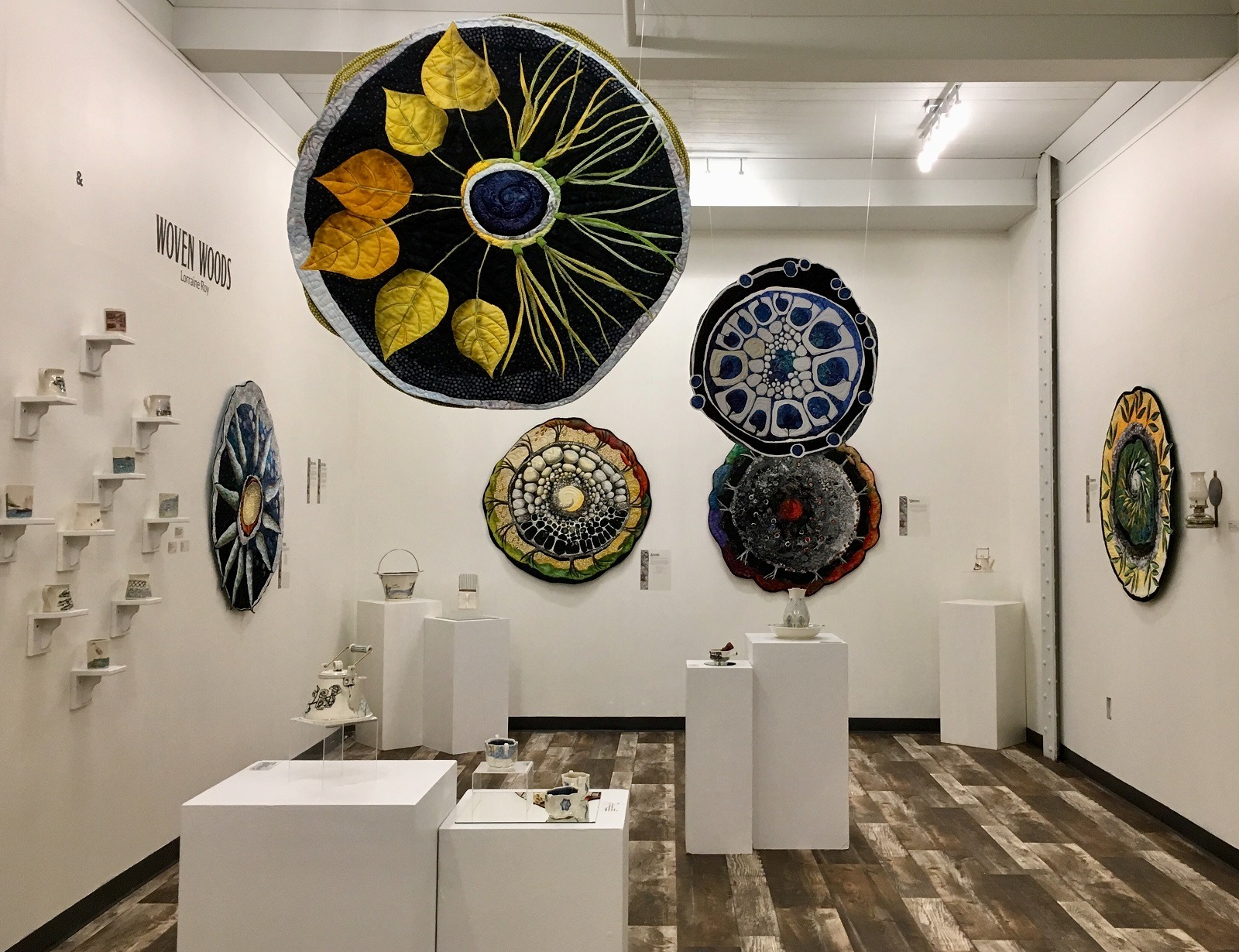
Your series Woven Woods is about the interconnection of trees through mycorrhizal networks. How did this inform your work?
Being fascinated by scientific research in tree-fungal communication, I applied for an Ontario Arts Council grant to travel to the University of British Columbia. There, I met Dr Suzanne Simard, a leader in the field of mycorrhizal (fungal) network research. She, along with some of her gracious graduate students, took me on a tour of their laboratory and field facilities on campus, and through the mountains to the forests around Kamloops.
It was an amazing experience. I couldn’t wait to share my reverence for this ancient forest system, not only for its own sake, but also because we have so much to learn from nature for our own survival on earth.
After this visit, I spent three years doing excruciating trial-and-error experiments. I was trying to find the best way to portray what I had learnt, without having it look like some kind of conceptual art-science project.
You will not believe the crazy things I drew on paper, the weird thoughts I thought, and the strange clunky semi-formed beings that were born and died. I lost so much sleep over flashes of brilliance, awakening to yet another non-germinator of an idea.
Eventually something clicked. I realised that the most logical way to show connection was with the circle.
Circles are present everywhere in the natural world. They are also symbolic of environmental cycles of all types, including seasonal, to reproductive, to regenerative. And, importantly, the circle form itself is inherently spiritual and beautiful.
The resulting exhibition, Woven Woods, is a collection of 12 circular quilted wall hangings, measuring 91cm to 114cm (36″ to 45″) in diameter. Each work depicts trees of varying types, seasons and stages of growth, and portrays a different aspect of their connection with the mycorrhizal network.
Every circle encloses the story of a thriving ecosystem, with individual elements contributing to support the whole.
I wrote a book to accompany the exhibition, Woven Woods: A Journey through the Forest Floor (2019). It explains the inspiration behind each artwork, along with relevant literary quotes and extra images relating to the works.
Since the launch of Woven Woods, I’ve continued working with circles in my work, notably tree rings, which are yet another fascinating area of study.
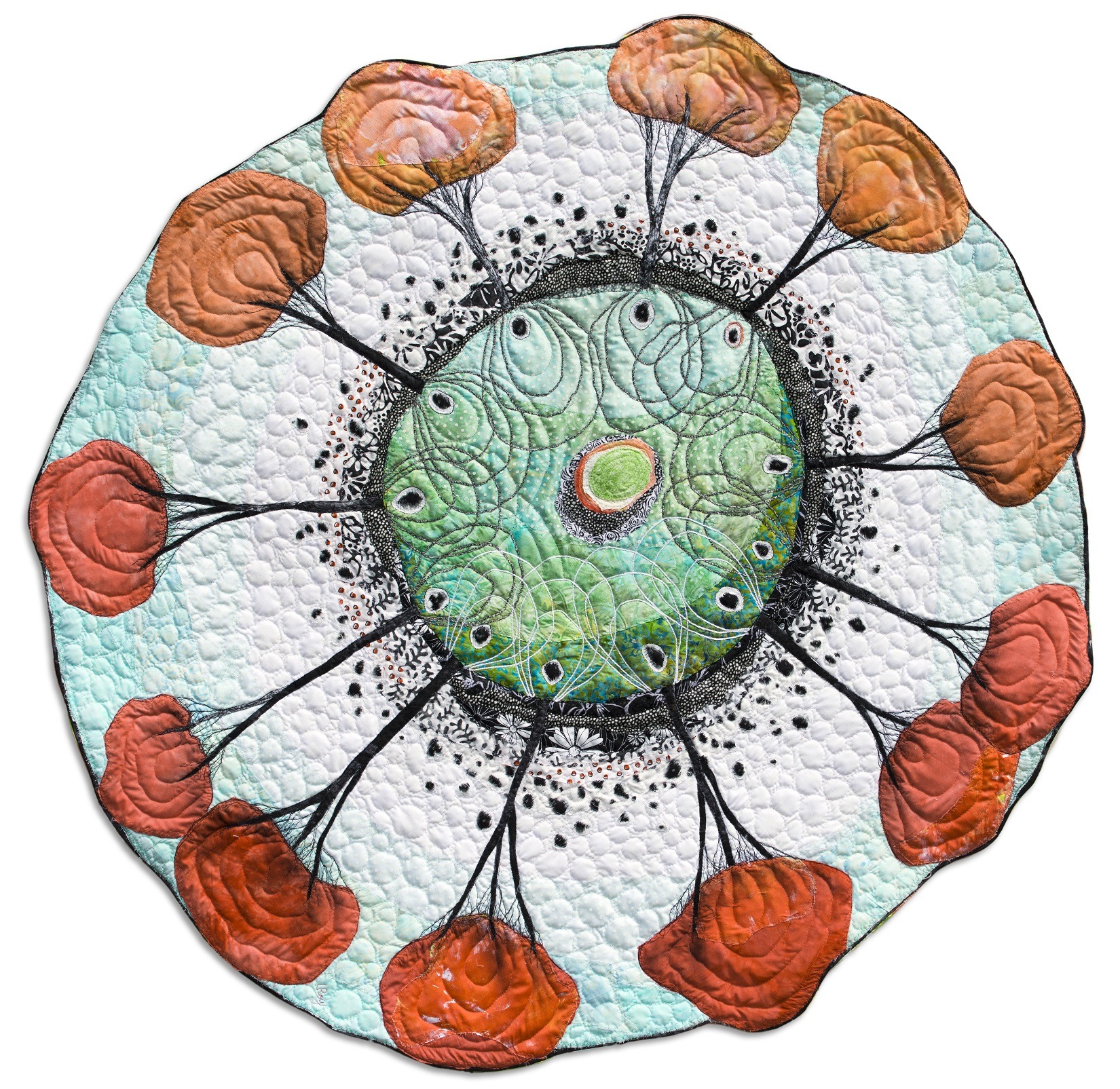
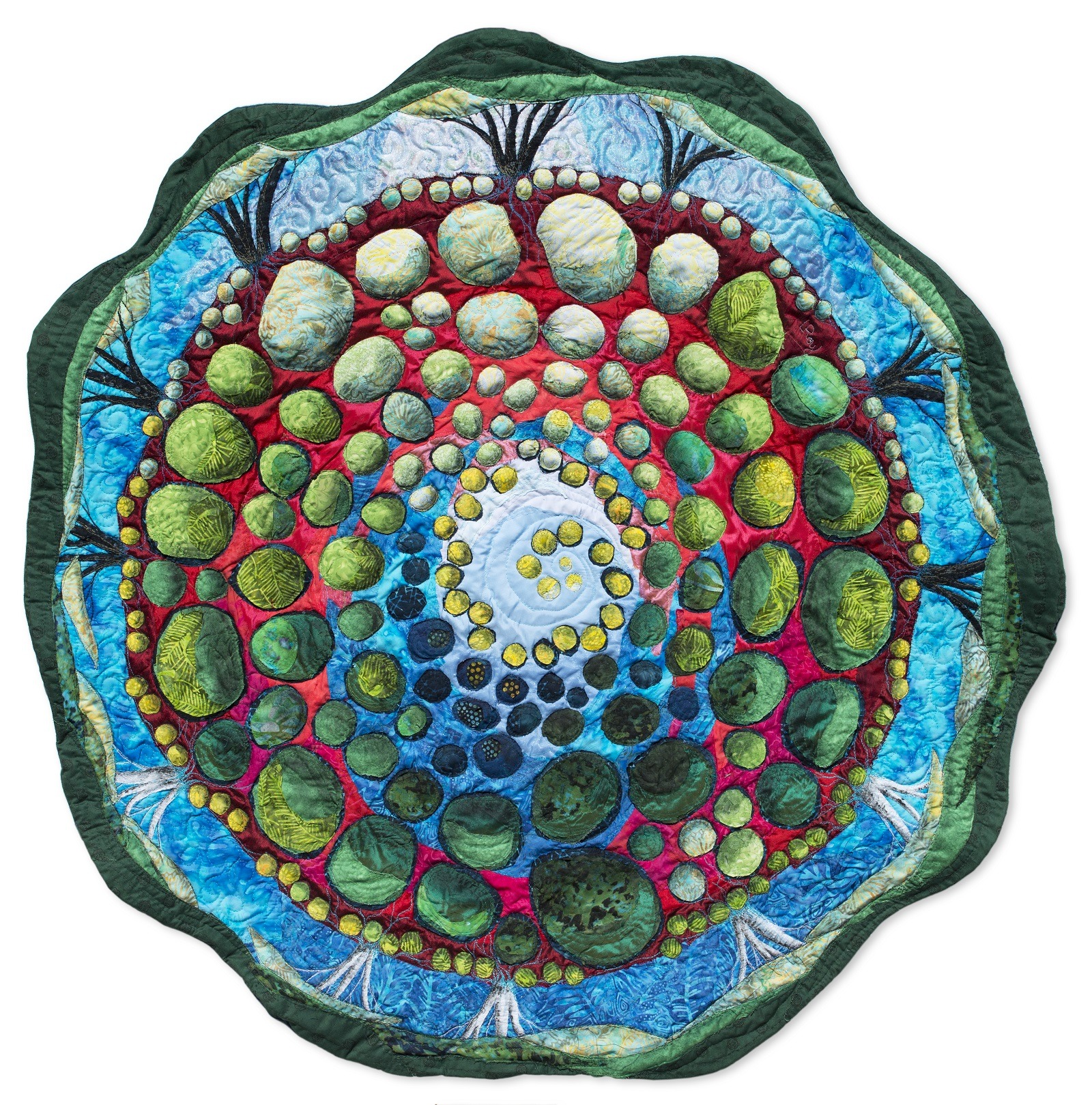
A scientific approach
Tell us about your process. How do you conceive and create your touring exhibitions?
I start with an idea that engages my heart and soul and connects with my science background. The subject is always something that builds upon my existing knowledge about a subject.
Then I do the research. During this stage I look for direct sources, approaching scientists, technicians and authors who are involved in research of the subject. I make lots of notes and drawings, and gather articles.
When I’ve assembled enough information, I start working on imagery.
I always start with a small drawing, never bigger than 10cm (4″), in pen and coloured pencil. This is the hardest part. Most of the time I have to say goodbye to preconceived notions and start fresh, over and over again. This work leads to decisions about the techniques I will use, which vary from project to project. Then it’s a matter of finding venues, which is an entire project of its own.
My work begins by laying a base fabric that is roughly the shape and size of the desired outcome. On top of that, I begin to work the design, laying fabric scraps down until I like the outcome. I pin them down and stitch using raw edge appliqué and machine embroidery.
I use all kinds of fabrics, including dyed and printed cottons, silks, a variety of synthetics and sheers, and cotton batting.
Every bit of stitching is done on my old industrial Bernina machine. Sometimes the works become quilted wall hangings, especially if they are large. I also frame my artworks, dropping them into float frames, without glass.
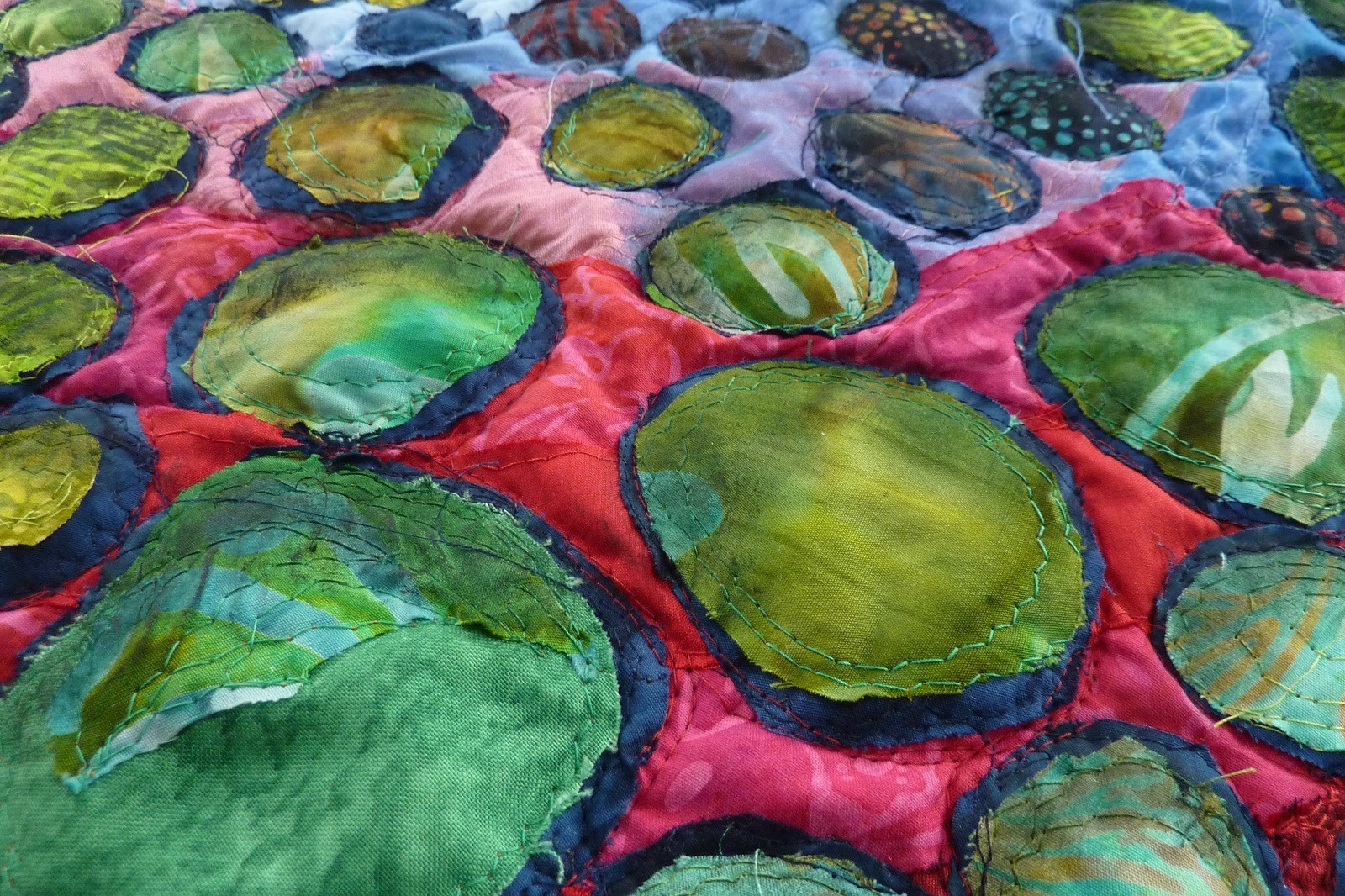
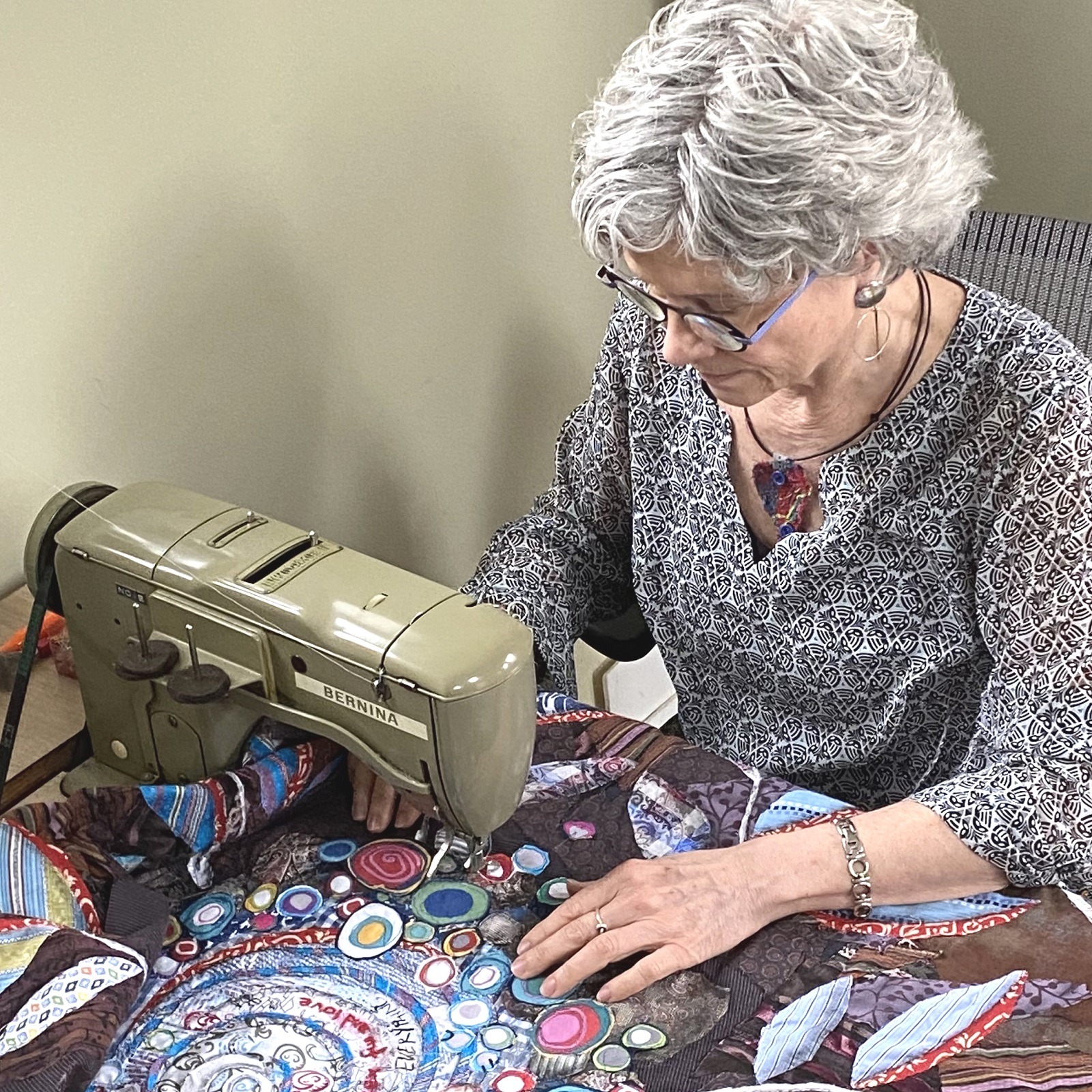
Do you have any advice for working with colour?
My main tip for anyone interested in colour is to take an intensive course on colour theory.
Many years ago I took a two week colour workshop, taught by an American textile artist, Rhett Delford Brown. I don’t know where I would be now if I hadn’t completed this course.
It’s fine to be intuitive, but it’s even better to know exactly why you make those choices. It helps greatly when you’re stuck. Knowing how to manipulate hue, value and intensity is the best tool for any artist.
I don’t have a favourite colour. I sometimes work for a long time with a suite of colours that relate well to each other, but choosing a favourite only gets in the way.
How do you display your larger works?
My biggest creation was a commission I made in 2009, for a spa on Anacortes Island, Washington State. It was 4m (14′) across and nearly 1.5m (5′) high. I make my large works as separate quilted panels, and they hang from bars stitched into sleeves at the back.
My circular artworks hang by a sleeve that follows the top edge, into which I slip a section of plastic hula hoop tubing. Sometimes I add a bar across the middle to stabilise it further.
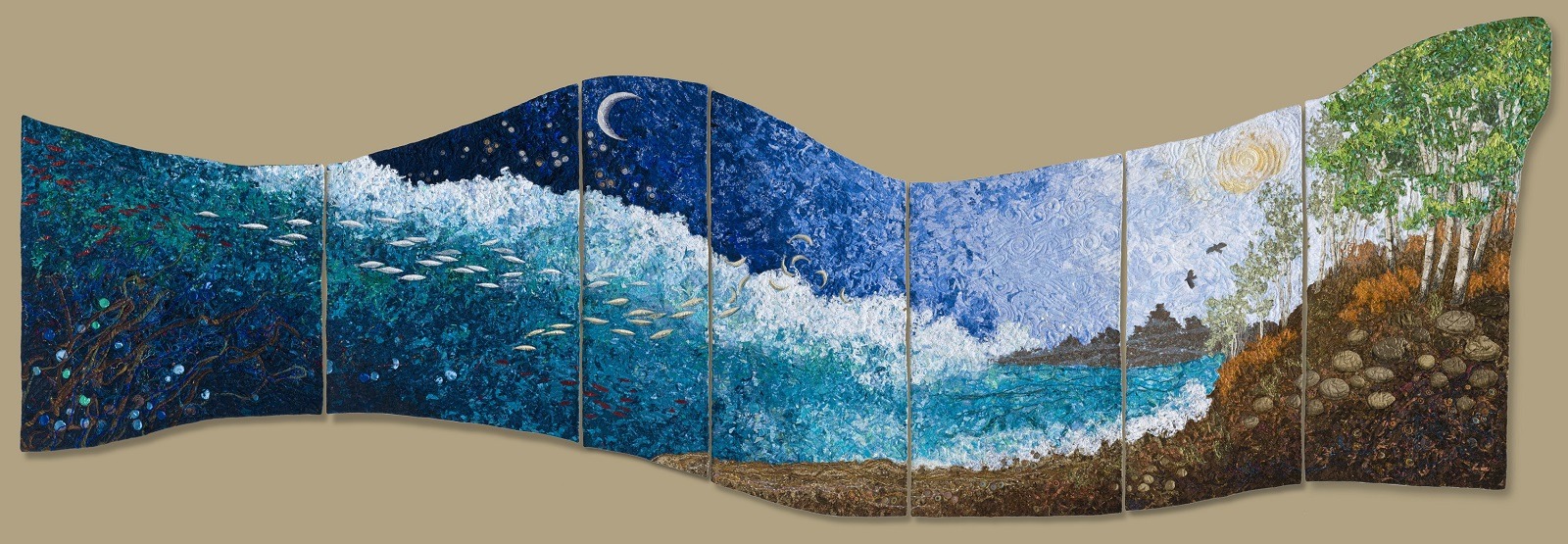
Stitching time
Which of your textile artworks is your favourite?
The answer to that question is a moving target. Out of the couple of thousand artworks I’ve made, I suppose I would choose Matriarch at the moment. It started out as a cross section of the trunk of a 100 year old tree. Yes, I really did stitch 100 rings!
I thought it was a bit dull, so I added a pale green mature oak in the centre and its progeny around the edge, in a dark border. It worked beautifully, both visually and conceptually, and I love its feeling of serenity. It now hangs in my home.
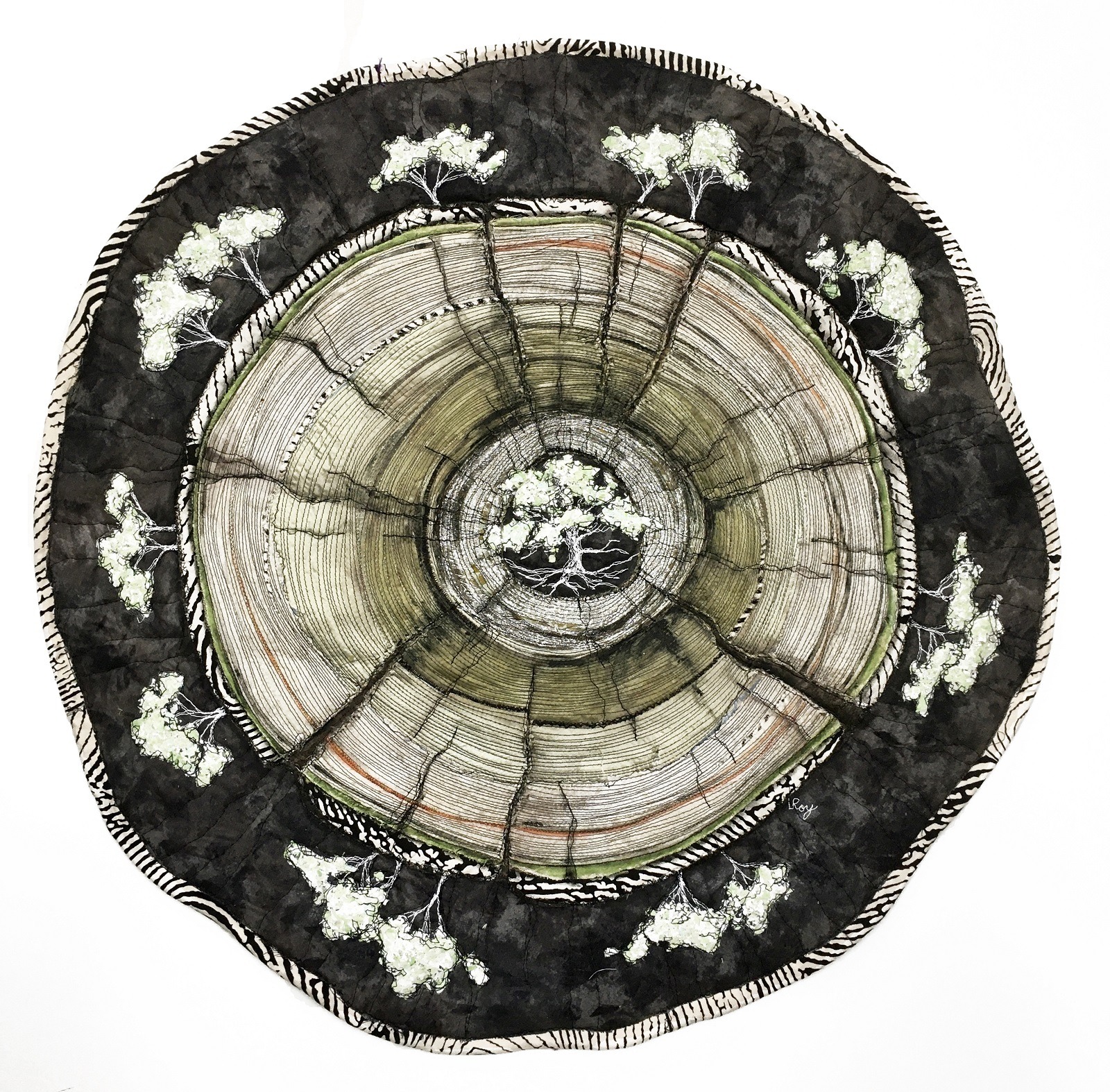
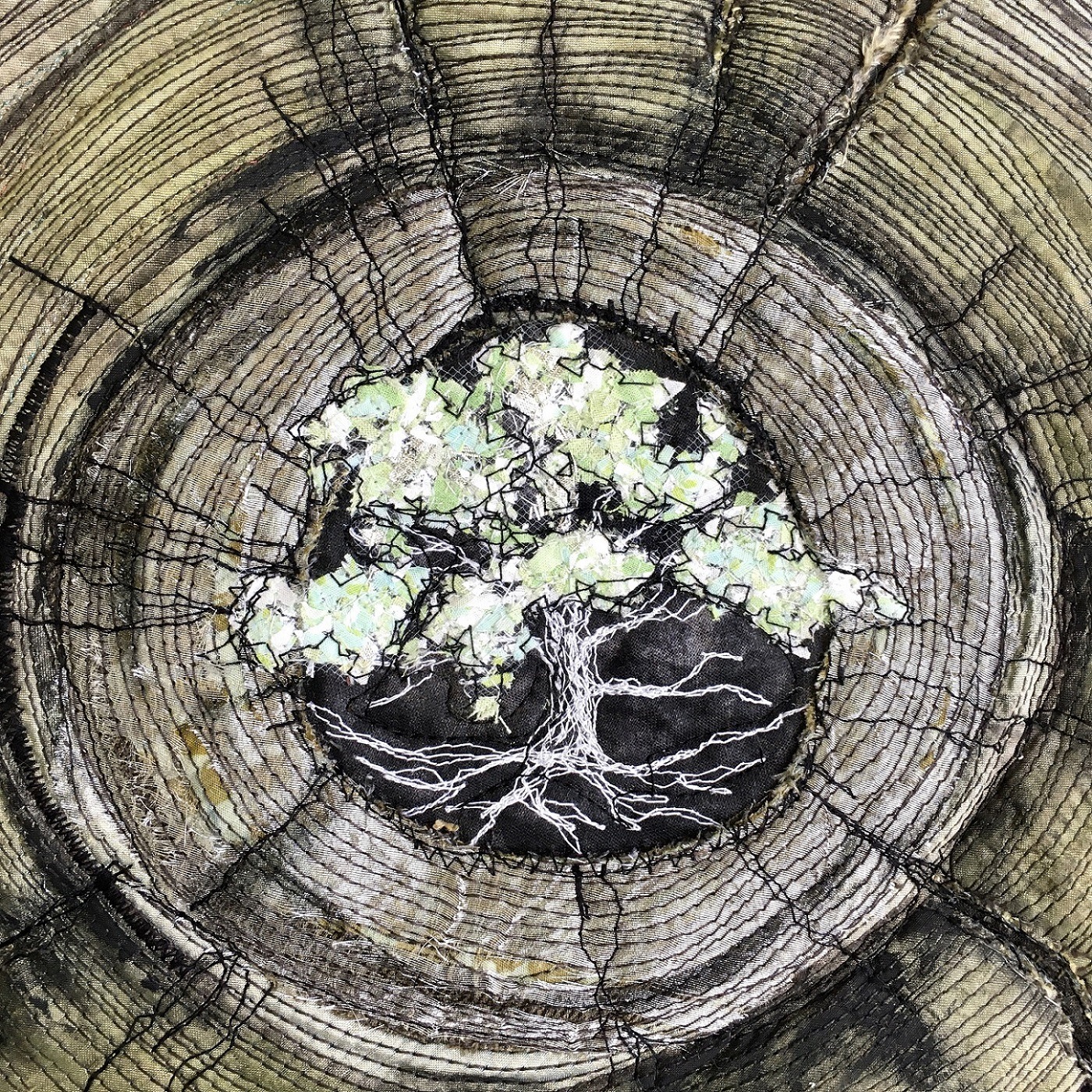
How did you make the switch from horticulture to art?
I was born and raised on a crop farm in a small French village called Pain-Court in Southern Ontario. I completed a BSc in Agriculture, majoring in Ornamental Horticulture, at the University of Guelph.
My mother taught me to sew at a very young age and I never looked back, fascinated by the textures and colours of fabrics.
After moving to London, Ontario, in the mid 1980s, I joined the Canadian Embroiderers’ Guild. I took workshops in art and embroidery techniques taught by career textile artists. The Guild tutors helped and encouraged me to grow from a shy introvert to a teacher and lecturer in art and textiles, and I owe them a world of gratitude.
I loved, and was devoted to, both career directions for years. Having a job in horticulture gave me the stability and time to work out technique and design ideas in my art practice, and to develop my own visual style.
The transition to full-time artist took around 10 years. I was enjoying it, and I started to sell artwork and teach. During this phase of life, it was important that I could depend on a secure income from my art, and this took a lot of time and effort to develop.
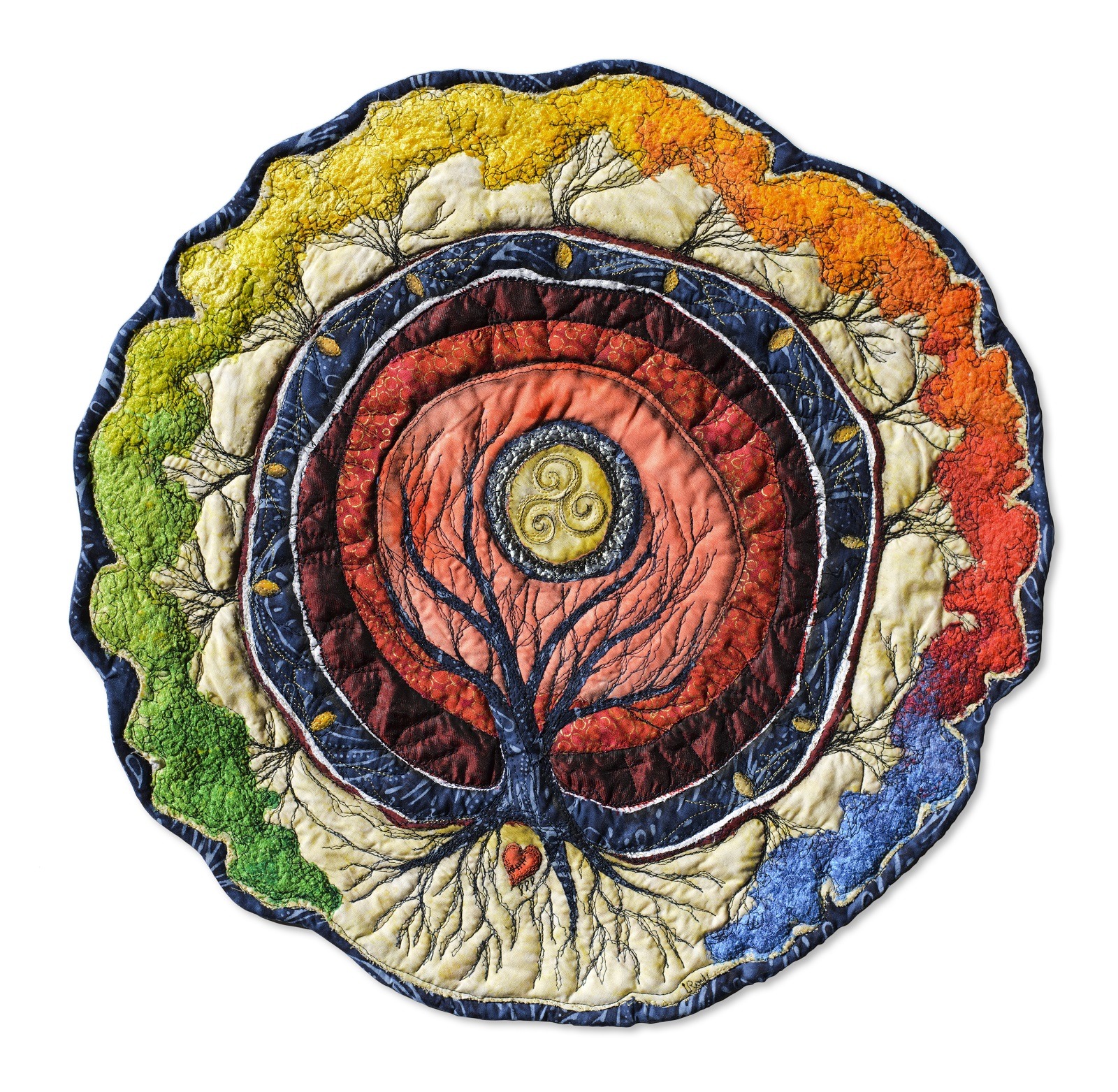
How might your work evolve in the future?
What is wonderful about an art career is that anything can happen. I love not knowing what’s coming next.
I may turn a page in a book and read a quote that sets me in an entirely fresh direction, or see an image that strikes me as having potential for exploration.
A scientist friend of mine is researching the activity of microbes in plants and that sounds interesting, and all the breaking research on forest fungi looks attractive too. Even without these two themes, I have way more ideas for my art than I could ever use in this lifetime.
After retiring from teaching workshops, I started doing presentations for various groups. I create tailored lectures for textile guilds, horticulture clubs and spiritual groups, and I’m truly enjoying sharing my work in this way. It’s another direction I’m eagerly embracing, with all its virtual world-wide possibilities.
I’m also passionate about natural gardens, so I’ve created works to help illustrate lectures about helping to preserve the environment, starting from your own garden or back yard. These works incorporate insects, fungi, birds and plants in their beautiful imperfect states, flaws and all. In this work, I hope to raise awareness about our destructive drive for ‘perfect’ lawns and gardens.
My commissions include book illustrations and covers, and artworks for a women’s health centre and an organisation that helps male prisoners reintegrate into the community. One client wanted nearly 20 pieces of work, all composed from her late husband’s collection of novelty buttoned shirts.
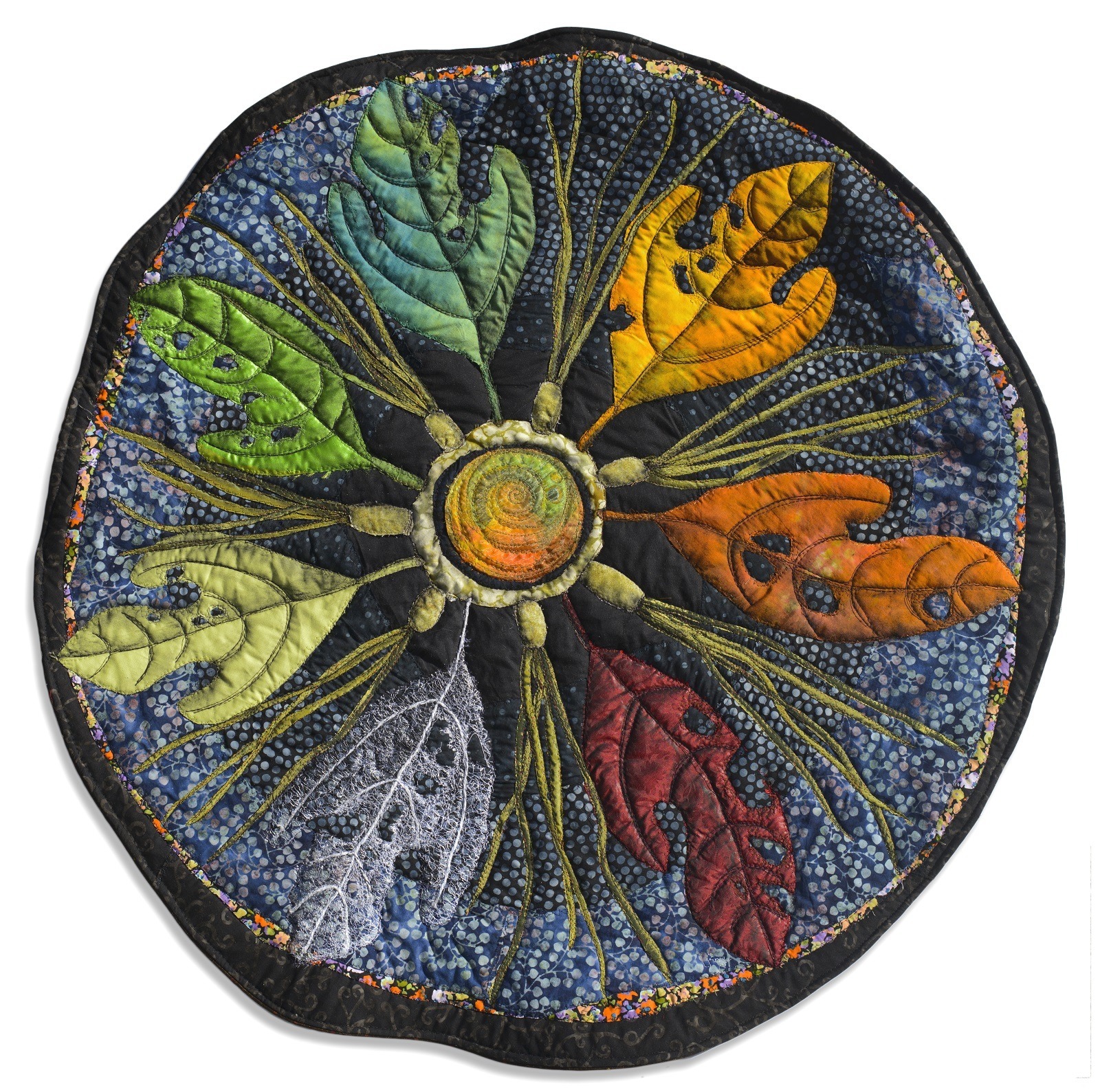
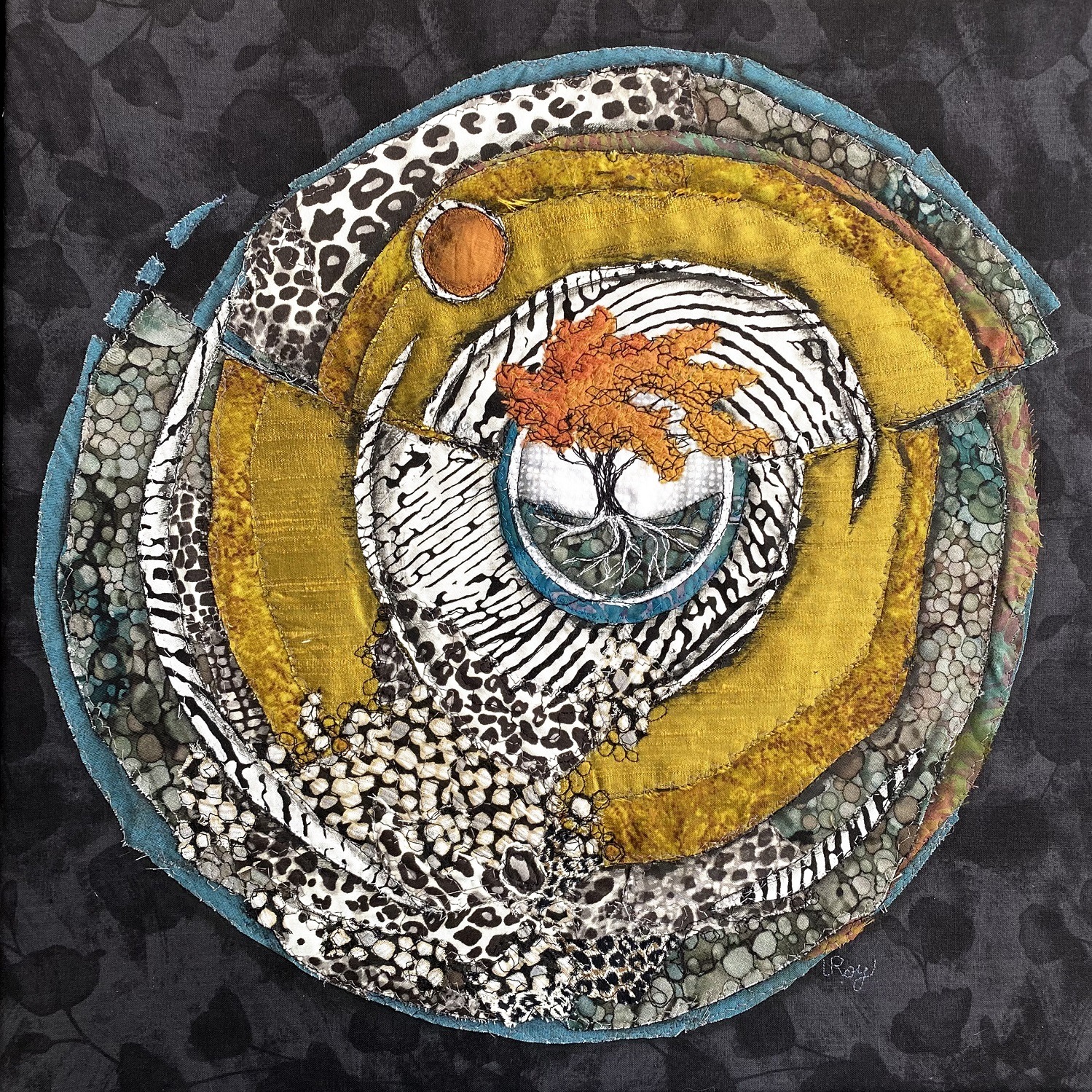
Read about another quilt artist inspired by nature, in David Taylor: Lego, jigsaw puzzles and art quilt fame.
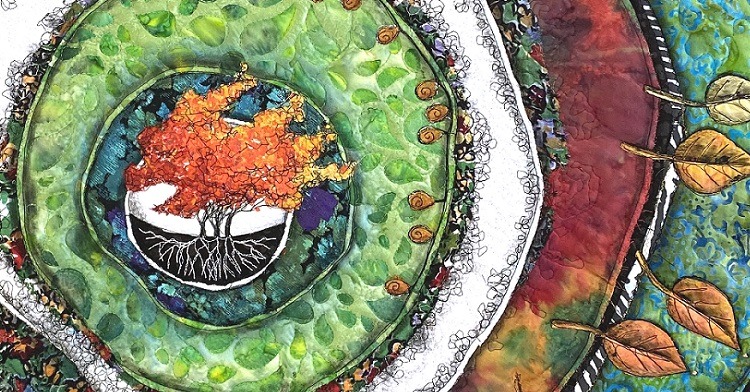

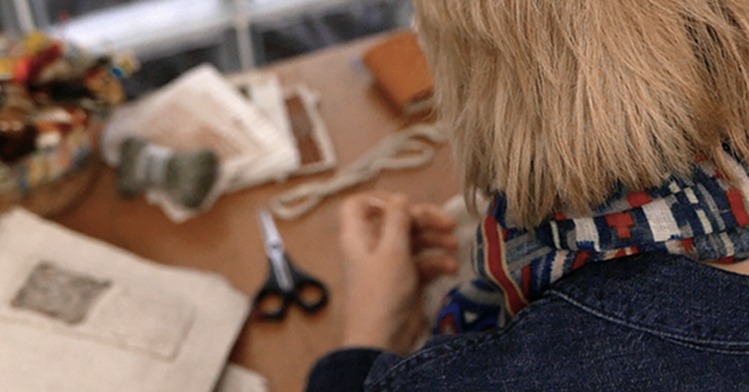
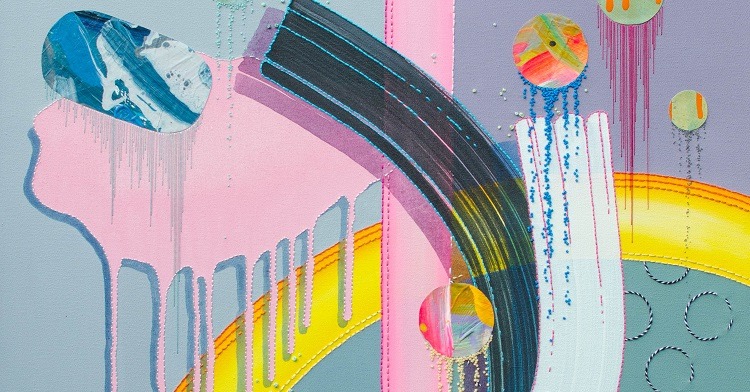
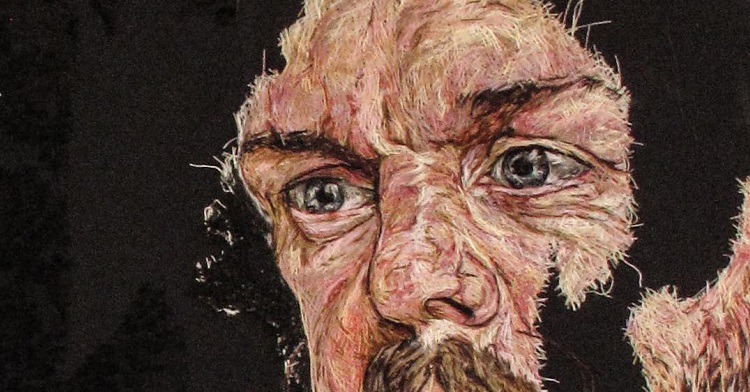
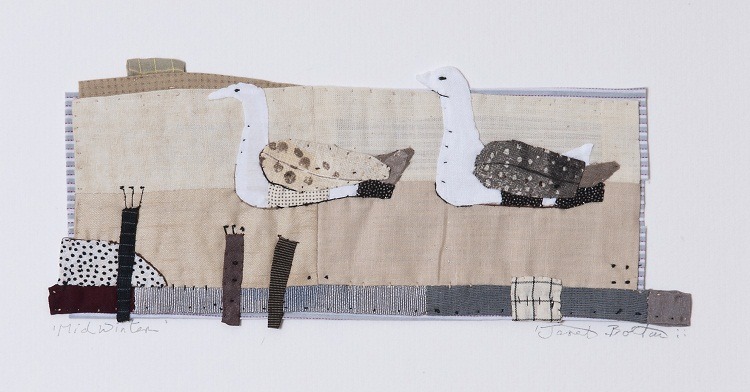
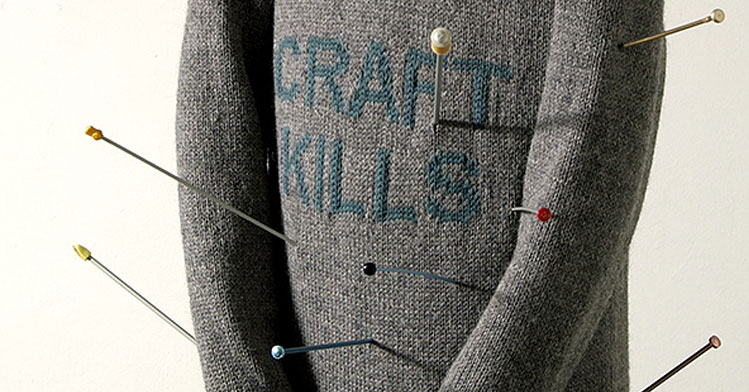
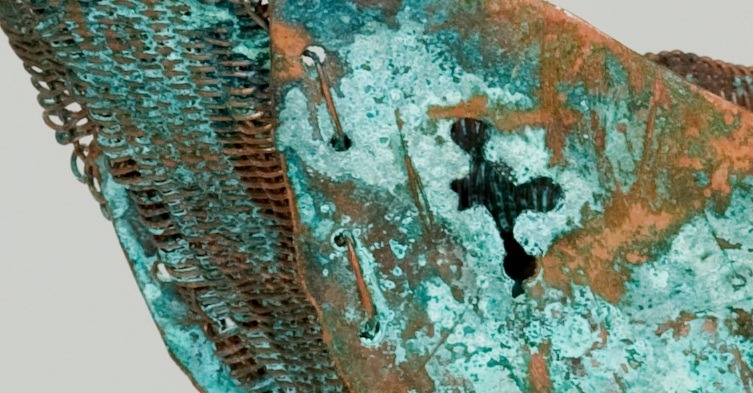
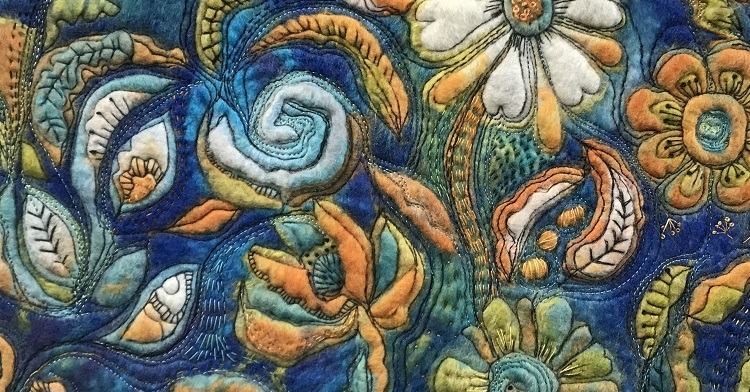
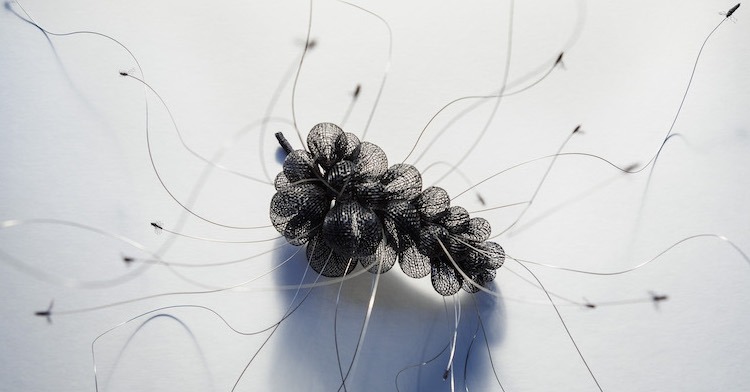
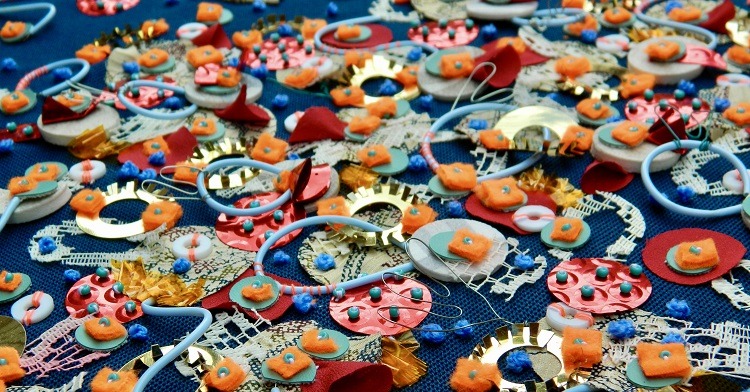
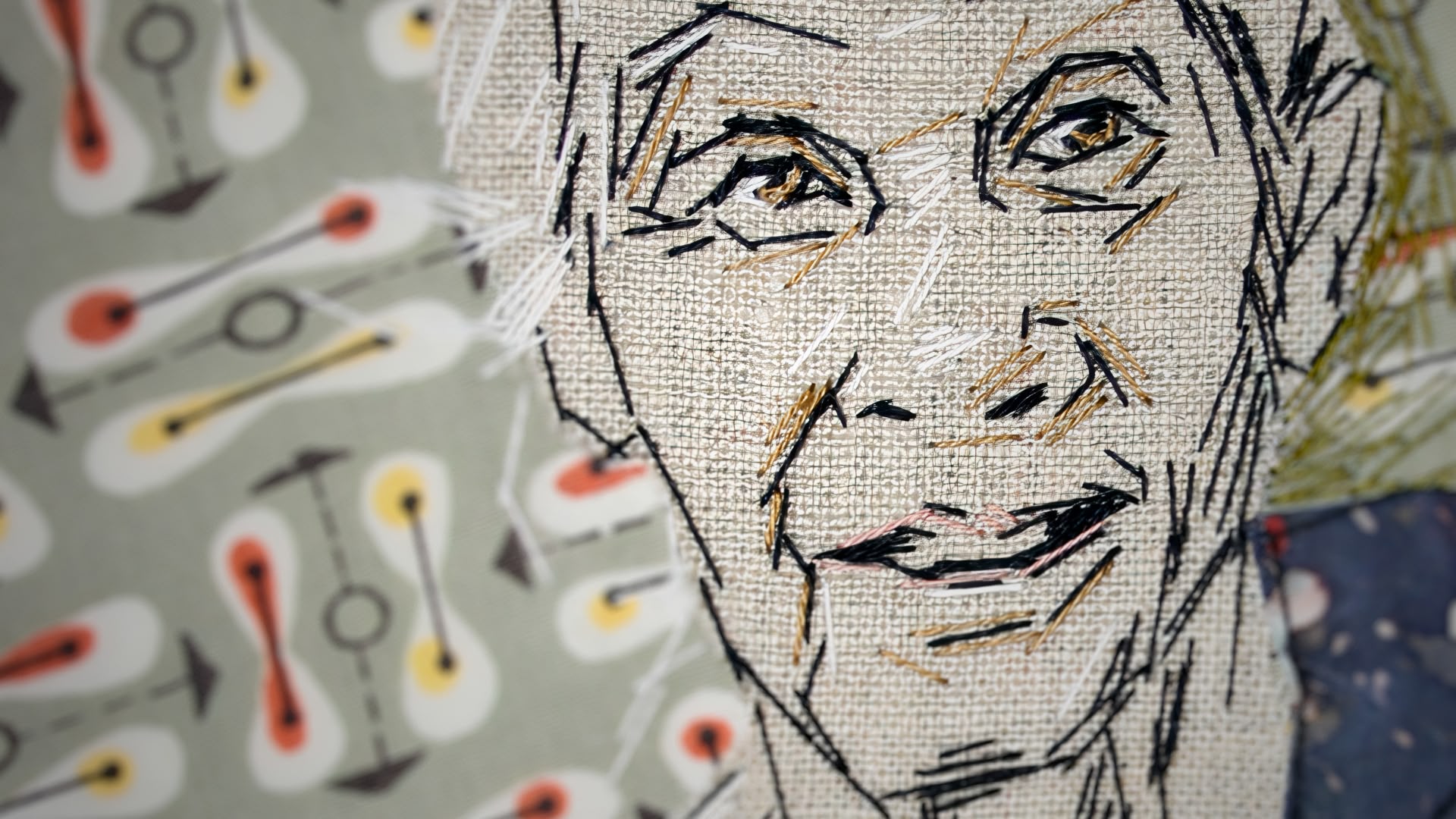
21 comments
Karin Dempsey Greenwood
Stunning textile art. Colours beautifully and very cleverly put together. Well done !!! Continue making many more beautiful pieces.
Ellen M Darby
I have been following you on Instagram for a while and I have to tell you that you are absolutely one of my most favorite artists!!!
Your designs and colors are out of this world and so inspirational!
Thank you!
Valerie Johnson
Love this work……tree rings telling a story. Now they are telling your story!
Megan PHILLIPS
Your wonderful tree loving soul has stirred something in not only my creative heart but in my embroidering and appliqué loving capacity to engage with textiles and textures. Thank you for your generosity in sharing!
Dorothy Warner
I love trees as well. This idea of looking at the roots or underground, is an eye opener for me. Exciting, inspirational. On my list to do. Thank you for yr beautiful work
Gloria Curry
Your use of colour is inspirational. It truly shows you are an artist.
Joan Flynn
Dear Lorraine
Your work is stunning and inspirational. I am preparing two works for an exhibition later in the year, and I suddenly have a million ideas in my head all clamouring for attention. Thank you so much for sharing your beautiful work.
Best wishes Joan
Jaye Dodds
Trees are my thing, too! I am part of a group with a monthly challenge and no matter what the theme, I make it work to have trees involved! I love your circular work.
Anne White
Dear Lorraine.
Wow!
An amazing and truely interesting and above all inspirational artical. Your textile work has really touched my heart. I too love trees… I haven’t thought about them the way you do but I just love the shapes and colours of tugs, branches, forms and leaves. I take lots of photos and am building up a project bookwith the intention of starting a textile piece when I retire in July. Thank you for saying it’s ok to love trees.
Kind regards Anne
Agnete Riemann
Dear Lorraine!
How beautiful your work with the trees is!
Your work is inspiring and trees are amazing creatures, graceful, strong and always changing.
Right now I’m working on a tapestry “The ocean”. Blue and green colors,wawes, lines, fish and plants.
Greetings from Nete Riemann, Denmark
Lorraine Roy
Thanks Sharron, so good to hear from you!
Lorraine Roy
Thanks so much, Rachel!
Lorraine Roy
That sounds wonderful, Nete! Greetings from Canada!
Rachel Celia
This is the most beautiful and inspiring work I’ve come across in AGES. And such good advice. Thankyou.
queen Ahneva Ahneva
Absolutely amazing works very inspirational..
Cathy Thomson
So interesting and inspiring. Thanks.
Julia
Absolutely beautiful
Sharron Deacon Begg
Such a wonderful story of your journey from then to now and absolutely fabulous pieces of work. Congratulations.
Maureen Wood
Just discovered this post and found it very interesting
Shirley Loats
So motivating and inspiring. TY. Stunning work
Lorraine Roy
Thank you, Shirley!